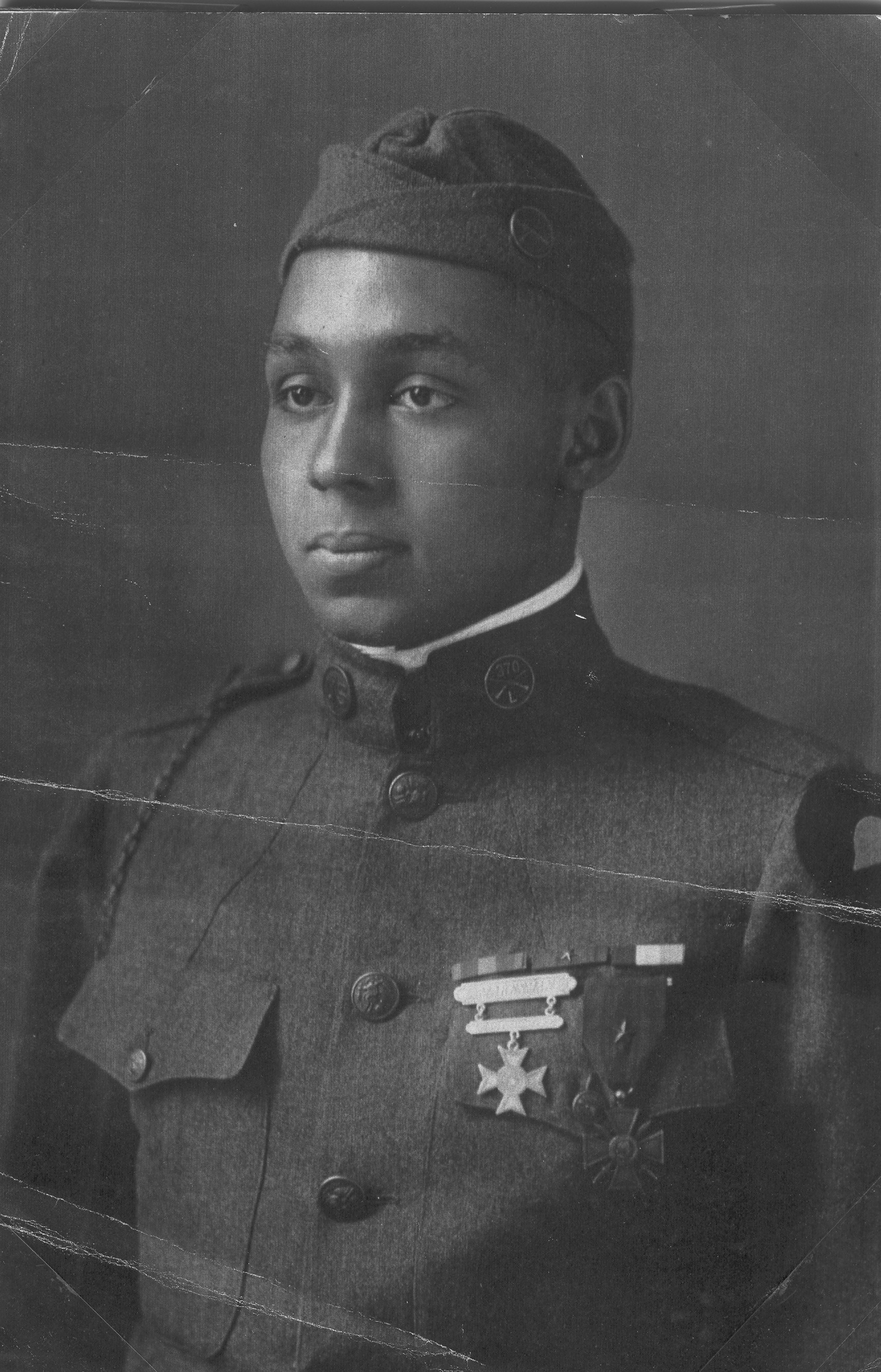Cecil Dewey Nelson, Sr.
1002 N. 5th Street, Champaign, IL
Cecil D. Nelson was the most decorated World War I soldier in the county. A sergeant in both the Mexican Expedition of 1916 and World War I, he increased his age so he could enlist in the Illinois 8th Regiment, known as the “Old 8th,” in Danville, Illinois. With the U.S. involvement in World War I, his unit become part of the all-Black 370th Infantry where he met and became friends with William Frank Earnest, whom he saw die. On October 18, 1918, he was awarded the French Croix de Guerre by French General Vincendon for bravery under fire, and several other decorations later for his service during World War I. The son of Joseph and Estella Nelson (née Anderson), he, like his mother, was born and raised in Champaign, Illinois, and was a member of Bethel AME. He returned home where he met and married William Franks’ niece, Carrie Mae Earnest, and became an active and respected member of both the Black and white communities. He lived at 1002 N. 5th Street in Champaign, and he is one of the founders of the William F. Earnest American Legion Post #559.
In August 1918, Cecil wrote to his aunt Clara Mae Allen on his relationship with William Frank Earnest. He wrote: “. . . You know Frank Earnest. He and I are buddies and have been together ever since we left Danville. His brother and a number of other Champaign boys are over here now. Also Roscoe Brewer. We haven’t seen any of them but have heard from them through the mail.
Well, answer soon, as I must go back to oh! I can’t say what as it is one of the restricted.
From your nephew,
Cecil D. Nelson
Co. L, 370th Infantry, Amer. Exp. Forces, France”
Decade:
1910-1919
People:
- Cecil Dewey Nelson
- William F. Earnest
Location(s):
- Champaign, Illinois
Additional Champaign Trail Sites

